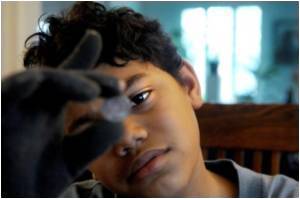Ever wondered why wearing pink, having long tresses and keeping a check on your make-up every now and then make people categorise you as a typical girl? Well, now a thesis from the

Anette Hellman has looked into how gender is created among young preschool children, with the starting point that gender derives from social processes.
Her study shows how different gender norms and markers can gradually become a part of physical gender identity.
She has also investigated what behaviours are feasible for boys and girls in relation to norms for boyishness.
The thesis shows that some of the children's many behaviours are categorised as being either "typical girl" or "typical boy", and are considered to be more appropriate than others. When children adopt the positions of "typical girl" or "typical boy" they become comprehensible and visible as a gender subject.
"Ideas about natural gender differences are often unintentionally taken into routine and everyday preschool situations. The stereotypes of boyishness and girlishness are often compounded in stressful situations such as mealtimes and assemblies," said Hellman.
Advertisement
During everyday activities with large groups of children in a time of libertarian ideas on self-regulation, responsibility, freedom and flexibility, the desirable and competent preschool child is instead empathetic, democratic and self-regulating.
Advertisement
This is the case, for example, for boys who do not enter into conflict, who have both girls and boys as friends, and who can play with objects and in spaces that are considered to be girlish.
It also applies to quiet and reserved boys. Girls who adopt the position of "troublesome" are, in turn, neither noticed nor understood in the same way as boys who adopt this position.
The study shows that "typical boys" are always taken into account in teachers' planning, the way they divide up groups and in their conversations with the children and each other.
The focus is on getting them to "calm down" by splitting up groups, introducing massage into quiet times, and avoiding activities such as music 'n' movement and art 'n' design.
"Preschool has the specific mandate of countering stereotypical gender patterns. Children test, replicate and question the norms that are repeatedly presented to them. But this doesn't mean that it is the norms that differentiate the genders that are the most important for the children," said Hellman.
Source-ANI









